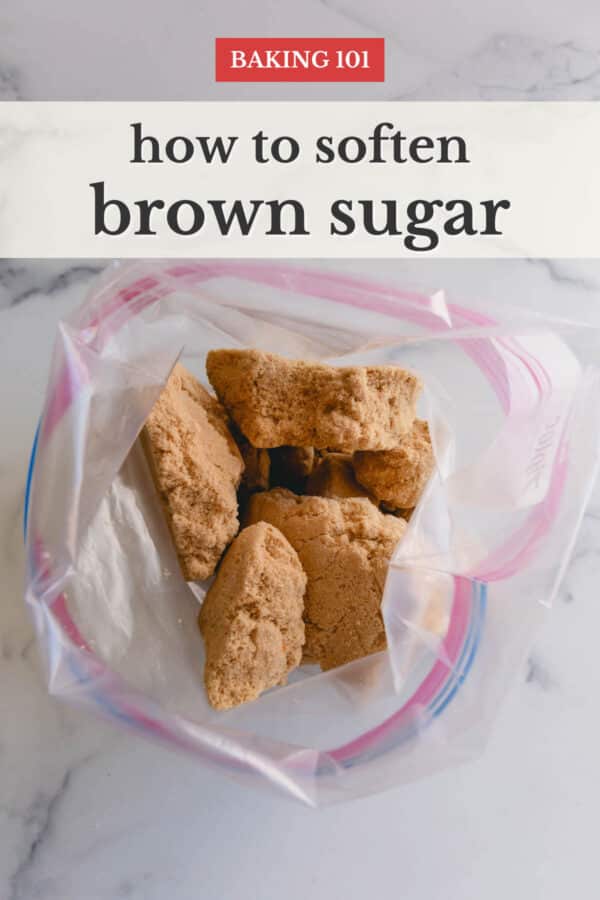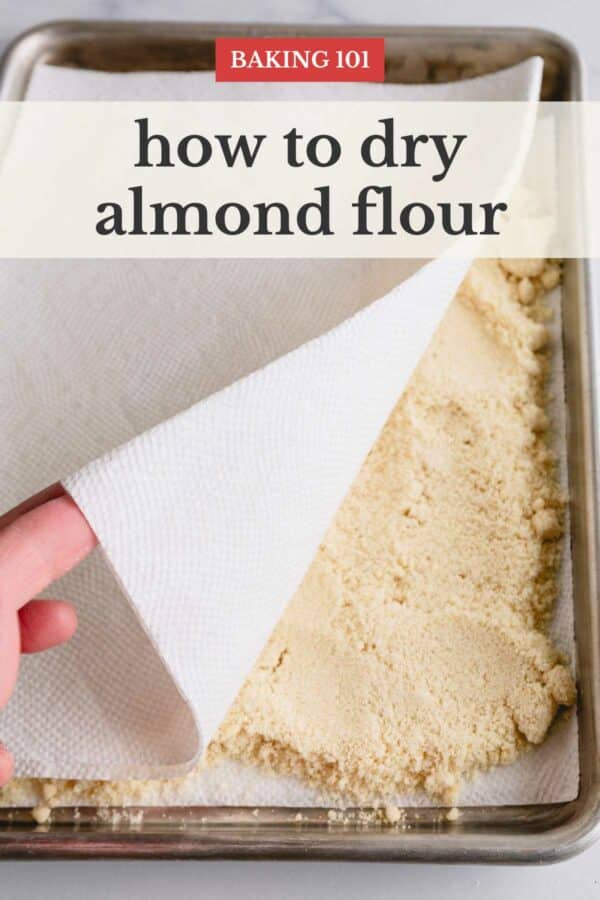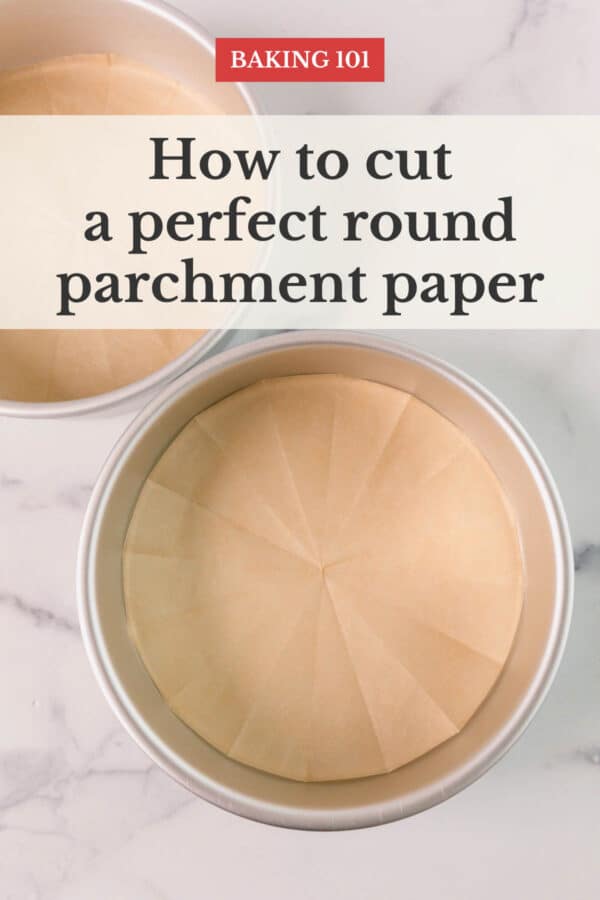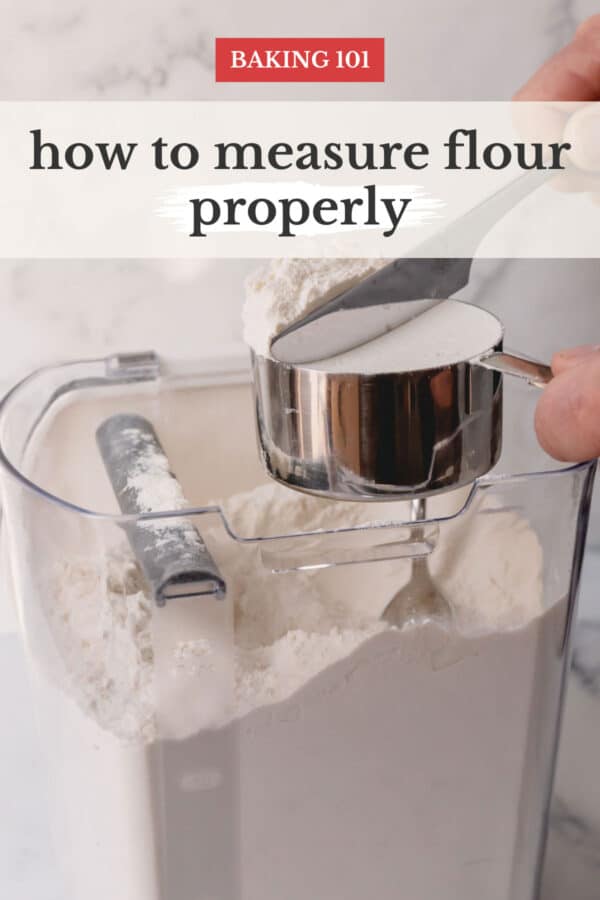I’m sharing my tried-and-true method of separating egg whites and yolks without an egg separator. Plus, there are many tips for best practices to keep the process clean and efficient.
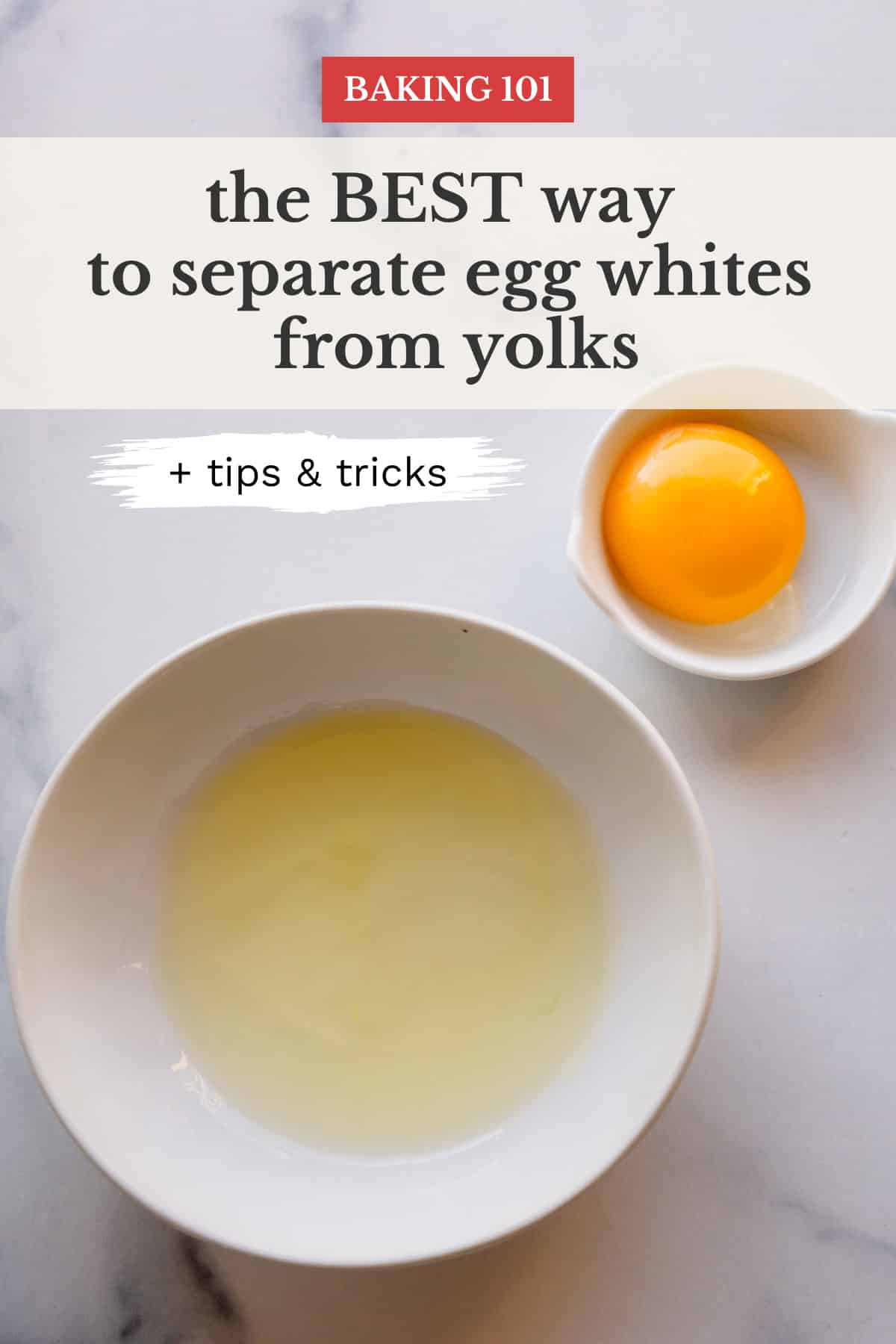
Table of Contents
You may have noticed my obsession with meringue-based desserts if you’ve been around for a little bit. Angel food cake, macarons, Pavlovas, you name it!
As you can imagine, with a decade of baking, I’ve become proficient at separating egg yolk from the white.
Many methods and tools exist for separating egg yolks and whites, but I stick to the basics. I’m not a fan of single-use kitchen tools unless they’re helpful, and I use them often enough.
How to Separate Egg Whites and Yolks
One of the most efficient ways to separate egg yolks and whites is by using the shell-to-shell technique. This method involves cracking the egg in half and gently transferring the yolk between the shells.
Here’s a step-by-step guide:
- Prepare three bowls: One small bowl and two bowls for collecting egg whites and yolks.
- Crack the egg: Begin by cracking the egg on a flat surface. Maintaining a steady hand is crucial to prevent any shell fragments from contaminating the egg contents.
- Hold the egg over the small bowl: Position the cracked egg over a bowl, allowing the egg white to flow out while cradling the yolk in one of the shell halves.
- Transfer the yolk: Gently transfer the yolk between the shell halves, allowing the egg white to drip into the bowl below. Repeat this process a few times until you have successfully separated the yolk from the whites.
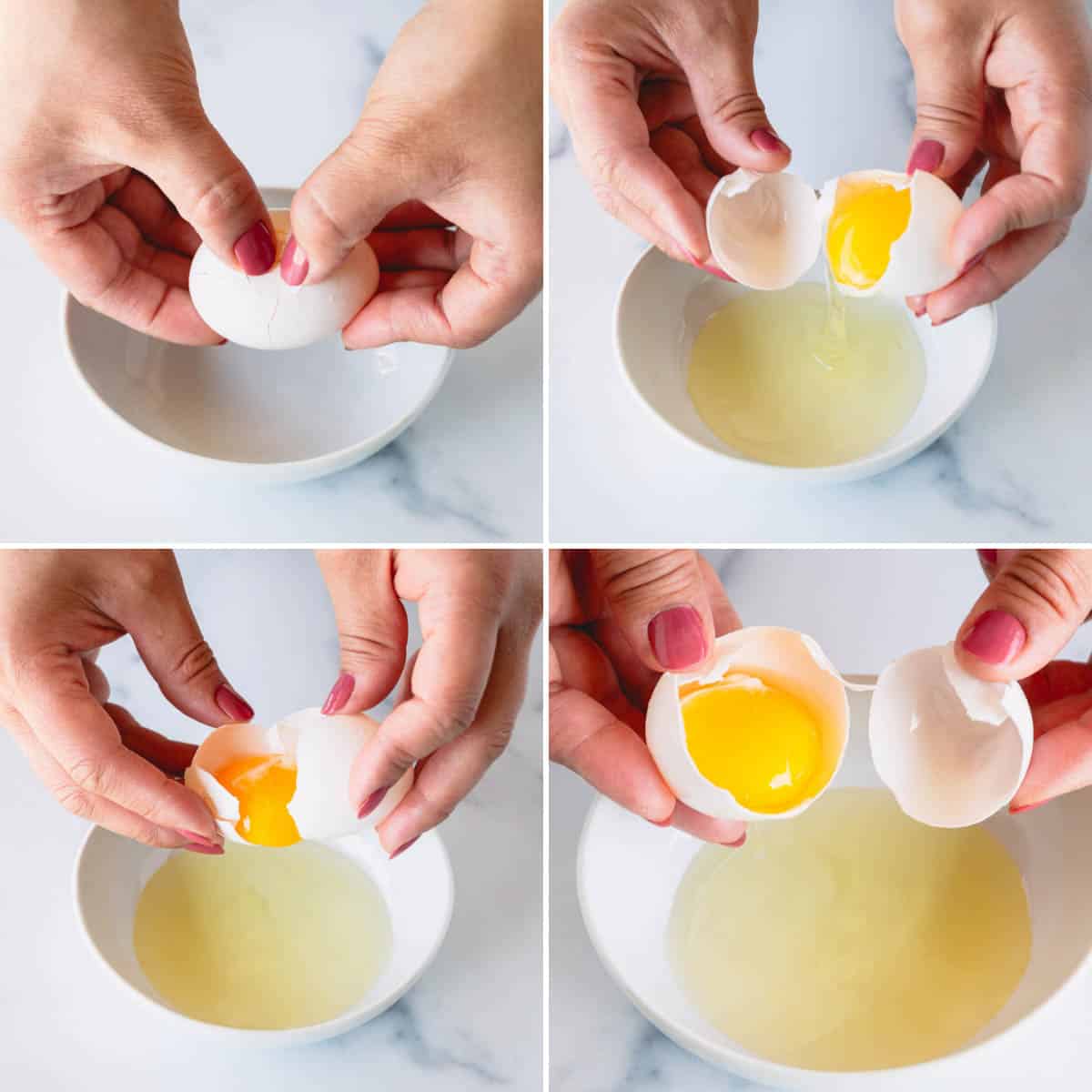
Does a drop of egg yolk truly ruin a meringue?
Egg yolks contain fat, and fat in the whites can hinder the whipping process, preventing the meringue from reaching the desired stiff peaks.
While I always advise not to contaminate the egg whites with even smallest amount of egg yolk, it’s all about the ratio!! When you’re making a macaron recipe with just 2 egg whites, you don’t want to contaminate it with a drop of egg yolk.
But if you’re making an Angel food cake with a dozen egg whites, a small drop of egg yolk may not affect it at all.
I’ll admit, I’ve scooped up a small drop of yolk from egg whites and still made a good meringue. But I’d err on the side of caution anyways.
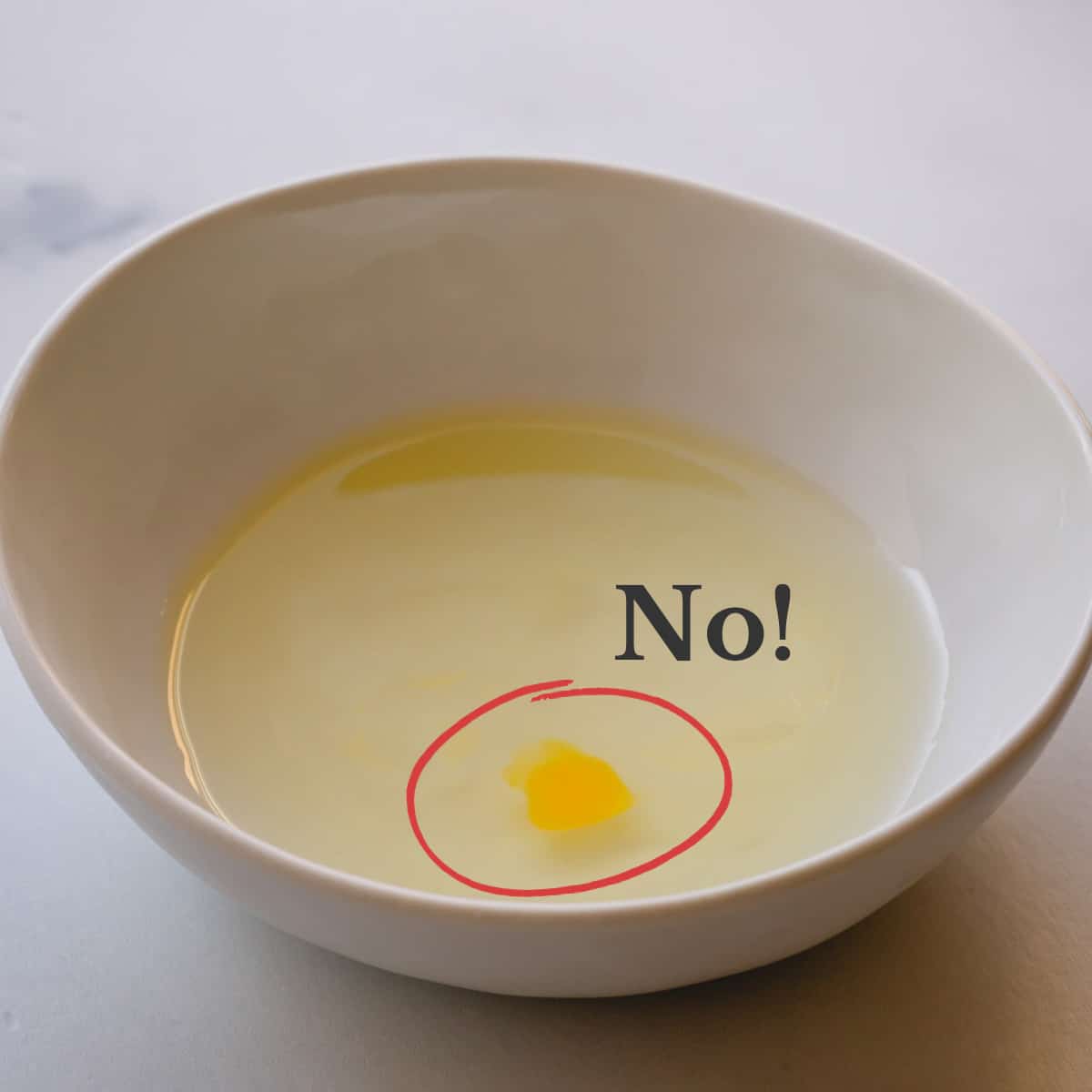
Tips for Success:
- Separate cold eggs because cold egg yolks are firmer and less prone to breaking.
- Use three bowls when separating multiple eggs. Have one bowl for collecting all the egg whites, another for yolks, and a third for the separation process. This precautionary measure ensures that if a yolk accidentally breaks during separation, it won’t contaminate all the egg whites in the bowl.
- Crack the egg on a flat surface instead of the edge of a counter to reduce the chances of tiny shell fragments getting in the egg.
- Use clean bowls for egg whites. Glass or stainless steel bowls are the best for storing egg whites. I recommend staying away from plastic containers for storing egg whites because residual grease can adhere inside the cuts and scratches of the plastic.
Storing Tips:
Refrigerate raw egg whites in an airtight container for up to 3 days. You can also freeze raw egg whites for up to 3 months.
Store raw egg yolks in an airtight container in the refrigerator for up to 2 days.
FAQs:
Yes, it is. Egg yolks are firmer and less likely to break when they’re cold.
Some people use a slotted spoon to separate egg whites from yolks. While it may be helpful to crack an egg over a slotted spoon to allow the egg whites to drip through the holes, it might become quite time-consuming if you’re working with many eggs. Egg whites are not always liquid as water and may not drip through the holes as easily.
Another way to separate egg white from its yolk is to crack an egg into your hand and let the egg whites drip between your fingers.
I do not like this process, as it’s too messy.
Yes, there is nothing harmful about a blood spot in the egg. As someone who uses farm eggs all the time, I’ve run into eggs with a blood spot all the time. Simply remove it with a paring knife, if desired.

